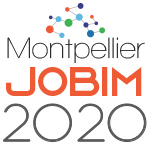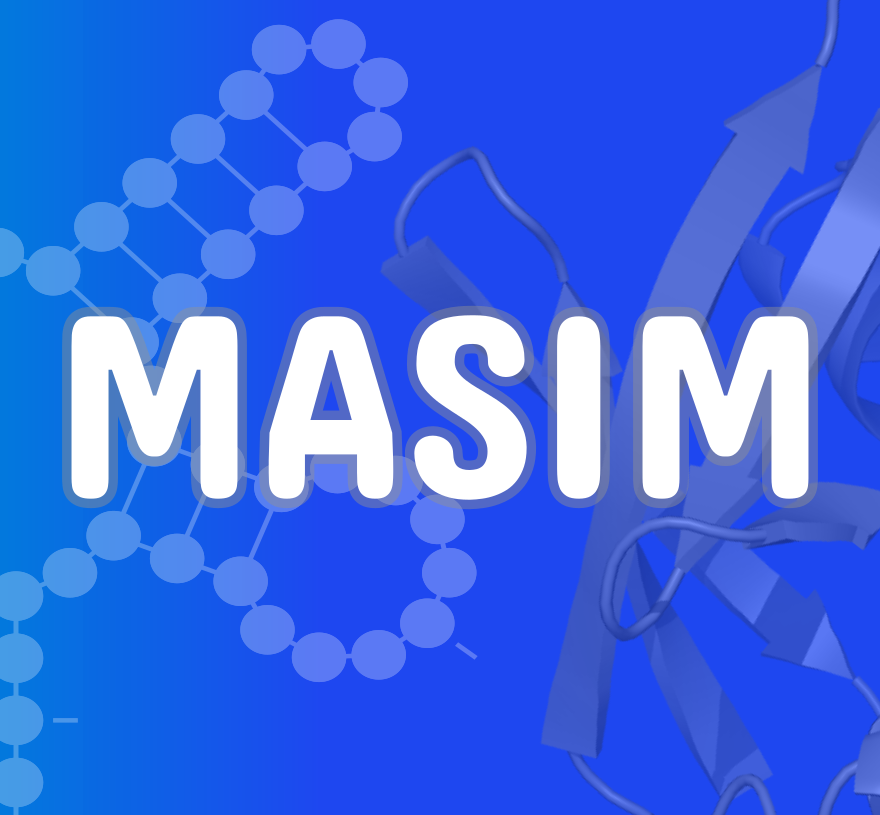Mini-symposium@JOBIM 2020
Quand : Mercredi 1er Juillet 2020 à 15h10
Où : Online (URL disponible via inscription à JOBIM 2020)

La bioinformatique structurale en tant que discipline est particulièrement bien adaptée pour l’exploitation fonctionnelle des données OMICS dans le contexte des réseaux cellulaires et/ou des communautés complexes. Son principal objectif est de déchiffrer les relations séquence – structure – dynamique – fonction au sein de systèmes, moléculaires intégrés dans leurs processus biologiques. Ce domaine s’appuie sur des données expérimentales produites par des protocoles biophysiques, en utilisant des méthodes et des algorithmes efficaces apportés par les mathématiques appliquées et l’informatique.
Ce mini-symposium sera axé sur les derniers défis et développements concernant :
- la modélisation des structures de l’ARN
- la compréhension des interactions protéines/ARN
- leur corrélation avec les fonctions biologiques.
Ces développements basés sur l’intégration des données de séquençage conduisent en outre à des applications à l’interface d’échelle entre génomique et bioinformatique structurale.
Organisateurs :
- Gwenaëlle André-Leroux, INRAE, Jouy-en-Josas
- Frédéric Cazals, Inria Sophia-Antipolis
- Isaure Chauvot de Beauchêne, CNRS LORIA, Université de Lorraine
- Juan Cortés, LAAS-CNRS, Toulouse
- Juliette Martin, MMSB@IBCP, Lyon
- Yann Ponty, LIX, Ecole Polytechnique, Palaiseau
Programme

15h10 – Samuela PASQUALI, CITCOM@Paris Descartes
« Exploring RNA flexibility through all atoms and coarse-grained modeling »
RNA molecules are known to be capable of adopting alternative secondary and tertiary structures, and therefore alternative overall architectures, in response to the environment. This flexibility, possibly related to their function as in the case of riboswitches, gives them a complex energy landscape with long-lived metastable states and intricate folding pathways.
In recent years we have tackled the question of RNA alternative folds with two alternative strategies, one based on path sampling with atomistic description in implicit solvent, and one using a coarse grained model. In this presentation I will discuss the basic ideas behind two methods and their context of applicability and show the results we obtained for two systems for which alternative folds have been fully characterized experimentally, namely the H1 hairpin of the non-coding RNA 7SK and g-quadruplexes.

15h45 – Fabrice LECLERC, CNRS/I2BC@Université Paris-Saclay
« Design of oligonucleotides as RNA-based drugs: prerequisites and opportunities for in silico methods within the framework of fragment-based approaches »
RNA-based therapies (RNA as a tool/drug, or as a target) have regained some significant interest with examples of successful applications in rare diseases and perspectives of applications in neurodegeneration, metabolic and cardiovascular disorders, and various cancers. Experimentally, the in vitro synthesis of aptamers (SELEX) has been widely used to generate high-affinity ligands against protein targets. However, few molecules have passed the clinical trials up to now.
Here, we propose a rational structure-based approach to design short oligonucleotides as protein ligands where the fragments are mono-nucleotides. For success, we need both high-quality data and efficient methods, e.g., a high-resolution 3D structure of the protein target, the ability to identify the more fitted nucleotidic fragment at a given binding site, etc. We will show to what extent our fragment-based approach satisfies the essential prerequisites and what opportunities it provides compared to experimental approaches.


16h20 – Sebastian WILL, LIX@Ecole Polytechnique
16h20 – → Felix KÜHNL@Uni. Leipzig
« Computational Analysis of RNA–Ligand Interaction Kinetics »
The binding of small ligands to RNA elements can cause substantial changes in the RNA structure, which constitutes an important mechanism of ligand-controlled gene regulation implemented by a wide variety of riboswitches.
Often, the associated refolding processes cannot be explained by thermodynamic effects alone, since they are governed by the kinetics of RNA folding.
Studying kinetic effects in RNA–ligand interaction (and even more RNA–RNA interaction) poses computational and modeling problems beyond the more established analysis of single-molecule RNA folding. The analysis of the combined process of ligand binding and structure formation even for small RNAs is plagued by intractably large state spaces. Moreover, the interaction is concentration-dependent and thus is intrinsically non-linear.
In our practically applicable approach to RNA–ligand kinetics, we apply a gradient-based coarse graining to RNA–ligand systems and solve the process in a pseudo-first order approximation. The latter is well-justified for the most common case of ligand excess in RNA–ligand systems. The method supports the kinetic study of RNA–ligand systems, in particular at different ligand concentrations. We will furthermore discuss the parametrization of the model based on empirical data, kinetics in the context of co-transcriptional folding and the relevance to the design of riboswitches.

17h00 – Petr SULC, Biodesign Institute@Arizona State University
« Immunostimulatory features in natural RNA transcripts »
Innate immunity is part of immune system defense against traits that are typically associated with pathogens. We will focus on pattern recognition receptors (PRR) that detect RNA, and we describe our physics-based approaches to quantify 1) immunostimulatory sequence patterns and 2) structure patterns. We apply the technique on viral genomes, as well as endogenous RNA transcripts from human genome. We identify multiple candidates that can be transcribed from repetitive elements in human genome, and show that they can be immunostimulatory. We argue that this « viral mimicry » of immunostimulatory RNA can be functional and play role during viral infections of cells as well as tumor immunity. Finally, we will discuss example on how these features could be harnessed with RNA nanotechnology for therapeutic purposes.
